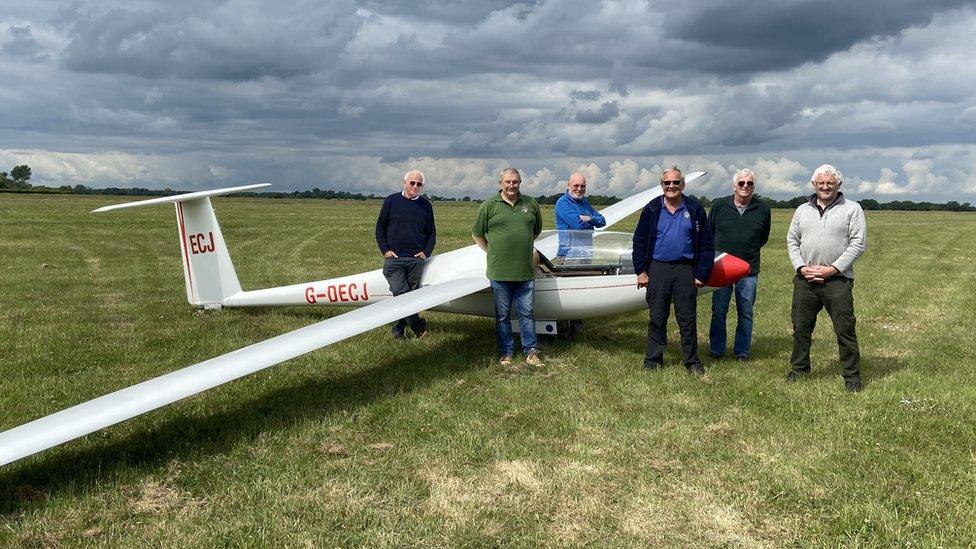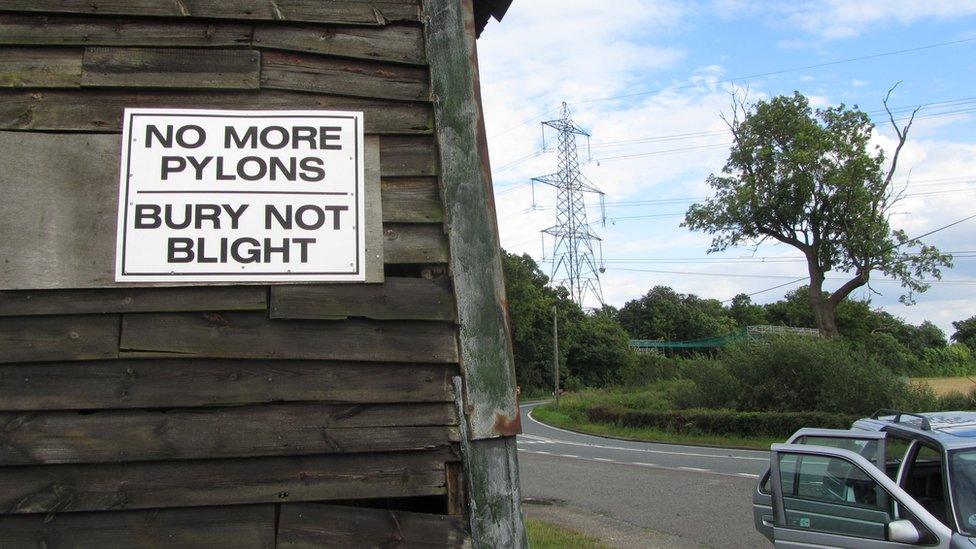Norfolk Gliding Club says pylon plans are a flight hazard
- Published

The Norfolk Gliding Club said the proposed pylons "could lead to more accidents or even fatalities"
A gliding club said its future was uncertain as plans for electricity pylons near its airfield could make it too dangerous to fly.
The Norfolk Gliding Club operates from Tibenham Airfield in south Norfolk, which was developed in World War Two.
The proposed high voltage line, between Norwich, Suffolk and Essex, would pass a few hundred metres from the runway.
National Grid said it was "carrying out assessments" to find "the most appropriate way" to run the line.
The club's chief flying instructor said the club was very concerned about the pylons.

The proposed line was needed for offshore wind, National Grid said
The pylons are part of a proposed 400kV electricity transmission line between Norwich and a new Bramford substation near Ipswich, and then to Tilbury in south Essex, called the East Anglia Green Energy Enablement, external project.
National Grid said the line was needed to carry electricity from offshore wind turbines.
A line of pylons already runs near the airfield, but further away than the proposed new ones and in a direction that is not frequently used by flyers, the Local Democracy Reporting Service said.
Club chairman Eric Ratcliffe said the plans were "ridiculous" and a "flight hazard".

National Grid agreed to put the cable underground through the Dedham Vale, but campaigners want more countryside free from new pylons
The club's chief flying instructor, John Roche-Kelly, questioned why the line could not be underground.
"We can't go round them," he said.
Gliders don't have engines so we can't go up.
"This is putting a curtain in front of the ideal route. It will make decision-making more difficult."
If the pylon scheme went ahead, the club believes it will have to close four of its six runways.
The proximity of the pylons would also mean that the club would have to stop holding competitions, the group said.
Club director Paul Woodcock said: "After Covid, we are just about hanging on in there, something like this can mean that clubs like ours will really struggle.
"It will be a danger to fly and it is a danger to the club, this will have serious impacts."
The National Grid spokeswoman said: "The government has set an ambition to connect up to 50 GW of offshore wind by 2030 - enough green energy to power every home in the country.
"It is National Grid's responsibility to connect new generation into the national transmission system and get it to where it is needed, safely and securely.
"We are at an early stage and we want to work closely with local communities.
"We're holding this consultation so people can tell us about the impacts they believe this project will have on them, and where they live.
"This is really important to us and our consultation is open until 16 June."

Find BBC News: East of England on Facebook, external, Instagram, external and Twitter, external. If you have a story suggestion email eastofenglandnews@bbc.co.uk, external
- Published10 May 2022

- Published22 April 2022

- Published18 March 2022
